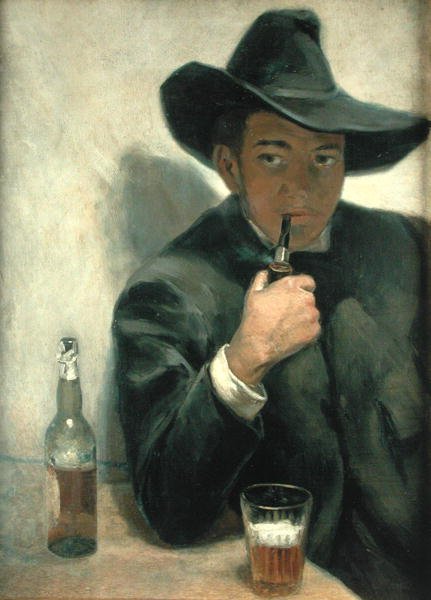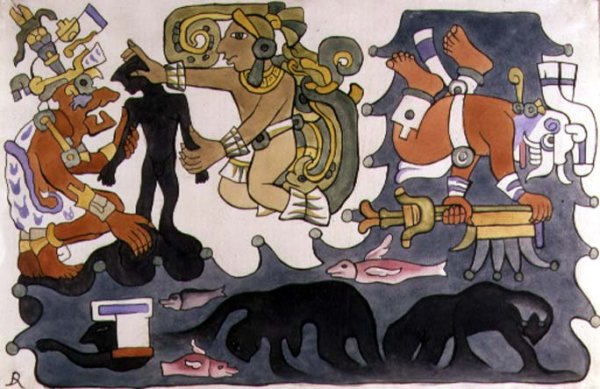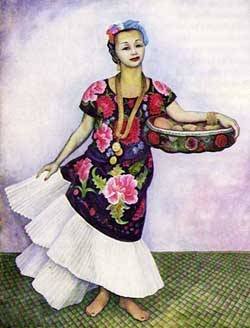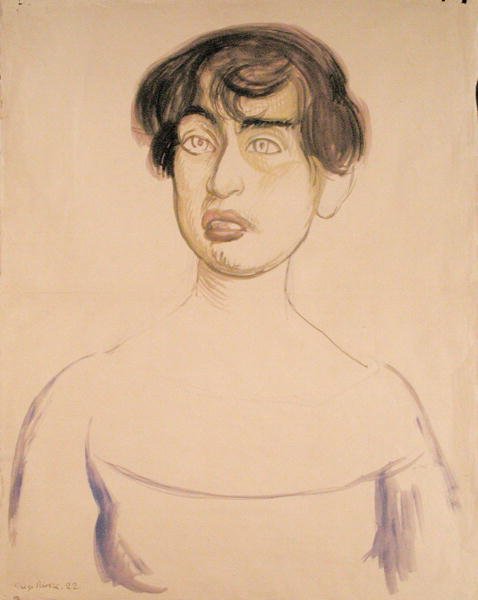Diego Rivera Biography In Details
Early life

Diego Rivera was born in Guanajuato City, Guanajuato, to a well-off family. Rivera claimed to be descended, on his mother's side, from Jews who converted to Roman Catholicism, and, on his father's side, from Spanish nobility. Since he was ten years of age, Rivera studied art at the Academy of San Carlos in Mexico City. He was sponsored to continue study in Europe by Teodoro A. Dehesa Mendez, the governor of the State of Veracruz.
After arrival in Europe in 1907, Rivera initially went to study with Eduardo Chicharro in Madrid, Spain, and from there went to Paris, France, to live and work with the great gathering of artists in Montparnasse, especially at La Ruche, where his friend Amedeo Modigliani painted his portrait in 1914. His circle of close friends, which included Ilya Ehrenburg, Chaim Soutine, Modigliani's wife Jeanne Hebuterne, Max Jacob, gallery owner Leopold Zborowski, and Moise Kisling, was captured for posterity by Marie Vorobieff-Stebelska (Marevna) in her painting "Homage to Friends from Montparnasse" What A Crazy Man (1962).
In those years, Paris was witnessing the beginning of cubism in paintings by such eminent painters as Pablo Picasso and Georges Braque. From 1913 to 1917, Rivera enthusiastically embraced this new school of art. Around 1917, inspired by Paul Cezanne's paintings, Rivera shifted toward Post-Impressionism with simple forms and large patches of vivid colors. His paintings began to attract attention, and he was able to display them at several exhibitions.
Career in Mexico

In 1920, urged by Alberto J. Pani, the Mexican ambassador to France, Rivera left France and traveled through Italy studying its art, including Renaissance frescoes. After Jose Vasconcelos became Minister of Education, Rivera returned to Mexico in 1921 to become involved in the government sponsored Mexican mural program planned by Vasconcelos. The program included such Mexican artists as Jose Clemente Orozco, David Alfaro Siqueiros, and Rufino Tamayo, and the French artist Jean Charlot. In January 1922, he painted - experimentally in encaustic - his first significant mural Creation in the Bolivar Auditorium of the National Preparatory School in Mexico City guarding himself with a pistol against right-wing students.
In the autumn of 1922, Rivera participated in the founding of the Revolutionary Union of Technical Workers, Painters and Sculptors, and later that year he joined the Mexican Communist Party (including its Central Committee). His murals, subsequently painted in fresco only, dealt with Mexican society and reflected the country's 1910 Revolution. Rivera developed his own native style based on large, simplified figures and bold colors with an Aztec influence clearly present in murals at the Secretariat of Public Education in Mexico City begun in September 1922, intended to consist of one hundred and twenty-four frescoes, and finished in 1928.
His art, in a fashion similar to the steles of the Maya, tells stories. The mural "En el Arsenal" (In the Arsenal) shows on the right hand side Tina Modotti holding an ammunition belt and facing Julio Antonio Mella, in a light hat, and Vittorio Vidale behind in a black hat. Rivera's radical political beliefs, his attacks on the church and clergy, as well as his flirtations with Trotskyists and left-wing assassins made him a controversial figure even in communist circles. Some of Rivera's most famous murals are featured at the National School of Agriculture at Chapingo near Texcoco (1925-27), in the Cortes Palace in Cuernavaca (1929-30), and the National Palace in Mexico City (1929-30, 1935). After returning to Mexico in 1934, the quality of his mural works began to gradually decline. [citation needed]
Later work abroad

In the autumn of 1927, Rivera arrived in Moscow, accepting an invitation to take part in the celebration of the 10th anniversary of the October Revolution. Subsequently, he was to paint a mural for the Red Army Club in Moscow, but in 1928 he was ordered out by the authorities because of involvement in anti-Soviet politics, and he returned to Mexico. In 1929, Rivera was expelled from the Mexican Communist Party. His 1928 mural In the Arsenal was interpreted by some as evidence of Rivera's prior knowledge of the murder of Julio Antonio Mella allegedly by Stalinist assassin Vittorio Vidale. After divorcing Guadalupe (Lupe) Marin, Rivera married Frida Kahlo in August 1929. Also in 1929, the first English-language book on Rivera, American journalist Ernestine Evans's The Frescoes of Diego Rivera, was published in New York. In December, Rivera accepted a commission to paint murals in the Palace of Cortez in Cuernavaca from the American Ambassador to Mexico.
In 1930, Rivera accepted an invitation to the United States, where he painted several significant works. After arriving in San Francisco in November, he painted a mural for the Stock Exchange and a fresco for the California School of Fine Art, which is now in the San Francisco Art Institute). In November 1931, Rivera had a retrospective exhibition at the Museum of Modern Art in New York City. Rivera's wife, Frida Kahlo accompanied him to New York for the opening of the MoMA show. Between 1932 and 1933, he completed a famous series of twenty-seven fresco panels entitled Detroit Industry on the walls of an inner court at the Detroit Institute of Arts. During the McCarthyism of the 1950s, a large sign was placed in the courtyard defending the artistic merit of the murals while attacking his politics as "detestable."
His mural Man at the Crossroads, begun in 1933 for the Rockefeller Center in New York City, was removed after a furor erupted in the press over a portrait of Vladimir Lenin it contained. As a result of the negative publicity, a further commission was cancelled to paint a mural for an exhibition at the Chicago World's Fair. In December 1933, Rivera returned to Mexico, and he repainted Man at the Crossroads in 1934 in the Palacio de Bellas Artes in Mexico City. This surviving version was called Man, Controller of the Universe. On June 5, 1940 Rivera returned for the last time to the United States to paint a ten-panel mural for the Golden Gate International Exposition in San Francisco. Pan American Unity was unveiled November 29, 1940. The mural and its archives reside at City College of San Francisco.
Personal life

Rivera was a notorious womanizer who had fathered at least two illegitimate children by two different women. Angeline Beloff gave birth to a son, Diego (1916-1918). Maria Vorobieff-Stebelska gave birth to a daughter in 1918. He married his first wife, Guadalupe Marin, in June 1922, with whom he had two daughters.
He was still married when he met an art student known as Frida Kahlo. They married on August 21, 1929 when he was forty-two and she was twenty-two. Their mutual infidelities and his violent temper led to divorce in 1939, but they remarried December 8, 1940 in San Francisco.
After Kahlo's death, Rivera married Emma Hurtado, his agent since 1946, on July 29, 1955. He died on November 24, 1957. (From Wikipedia)




